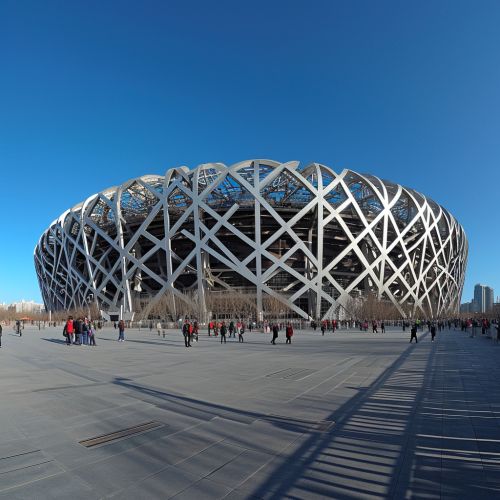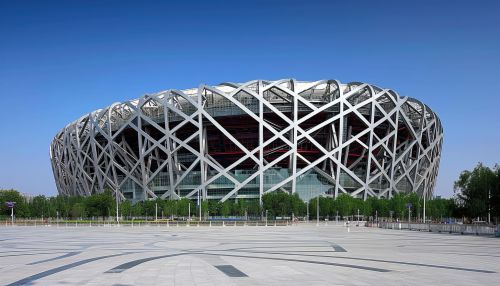Bird's Nest Stadium
Introduction
The Beijing National Stadium, colloquially known as the Bird's Nest Stadium, is a monumental structure that stands as a testament to modern architectural and engineering prowess. Located in the Olympic Green, the stadium was designed for use throughout the 2008 Summer Olympics and Paralympics.
Design and Construction
The Bird's Nest Stadium is a marvel of contemporary architectural design and engineering. The design was the result of a collaborative effort between Swiss architecture firm Herzog & de Meuron, project architect Stefan Marbach, artist Ai Weiwei, and CADG which was led by chief architect Li Xinggang. The design was inspired by the form of a bird's nest, a concept derived from the Chinese philosophy of a harmonious earth. The design was intended to embody the Olympic spirit, national sentiment, and the zeitgeist of the time.


The construction of the stadium began in December 2003 and was completed in June 2008, just in time for the Olympic Games. The construction process was a massive undertaking, requiring a workforce of over 30,000 people. The stadium is primarily composed of steel, with a total of 42,000 tons used in its construction. The outer shell of the stadium is composed of a complex network of steel beams, which form the distinctive "bird's nest" appearance.
Features and Facilities
The Bird's Nest Stadium is not just an architectural marvel, but also a fully functional sports facility. It has a seating capacity of 80,000, making it one of the largest stadiums in the world. The stadium is equipped with advanced facilities for athletes, spectators, and media personnel. It includes training rooms, locker rooms, a media center, and a variety of concession stands.
The design of the stadium also takes into account the needs of disabled spectators, with accessible seating and facilities. The stadium has a retractable roof, which can be opened or closed depending on the weather conditions. The roof is made of ETFE (Ethylene tetrafluoroethylene), a type of plastic which is resistant to corrosion, has high heat resistance, and is relatively transparent to UV radiation.
Post-Olympics Use
After the conclusion of the 2008 Summer Olympics and Paralympics, the Bird's Nest Stadium has been used for a variety of events. It has hosted numerous sporting events, including the IAAF World Championships in Athletics in 2015. The stadium has also been used for concerts, cultural events, and tourist visits. It has become a popular tourist attraction in Beijing, drawing millions of visitors each year.
Impact and Legacy
The Bird's Nest Stadium has had a significant impact on the architectural world and has left a lasting legacy. It has been praised for its innovative design and engineering, and has won several awards, including the IStructE Award for Sports or Leisure Structures. The stadium has also been influential in the field of sustainable design, as it was built with environmental considerations in mind. The use of rainwater collection systems, natural ventilation, and sunlight permeable roof are examples of its environmentally friendly design.
